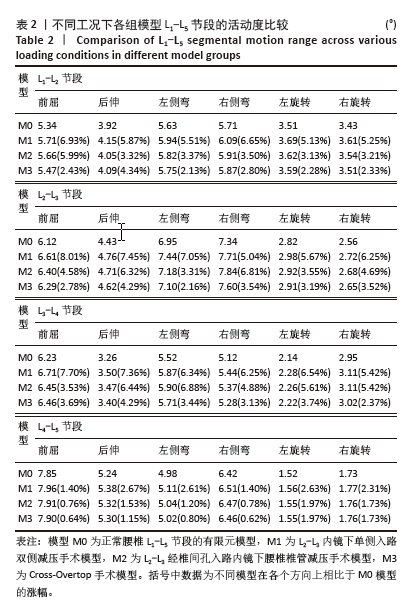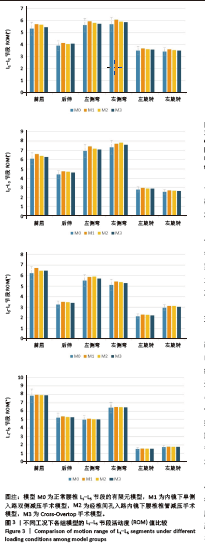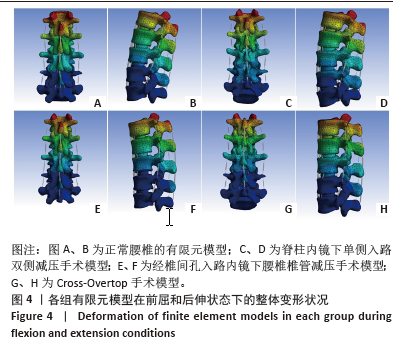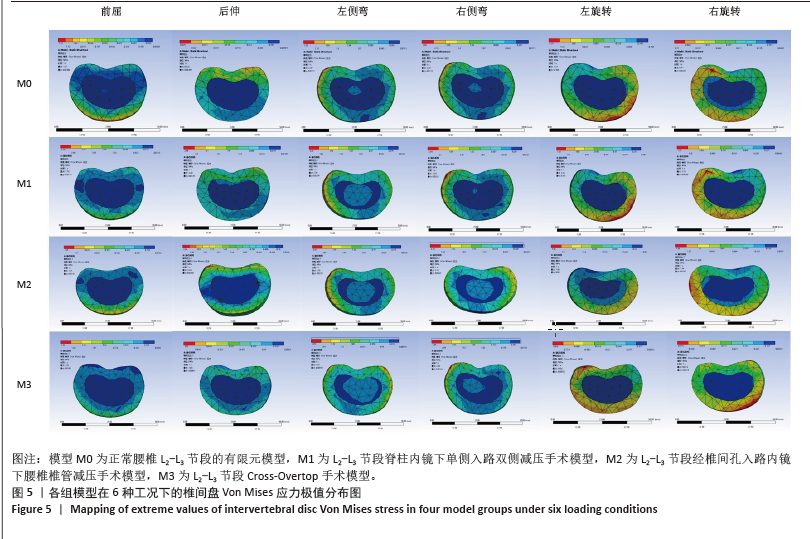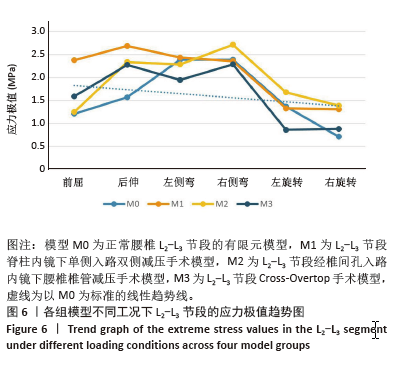[1] JENSEN RK, HARHANGI BS, HUYGEN F, et al. Lumbar spinal stenosis. BMJ. 2021;373:n1581.
[2] KATZ JN, ZIMMERMAN ZE, MASS H, et al. Diagnosis and management of lumbar spinal stenosis: A review. JAMA. 2022;327(17):1688-1699.
[3] ANDREISEK G, IMHOF M, WERTLI M, et al. A systematic review of semiquantitative and qualitative radiologic criteria for the diagnosis of lumbar spinal stenosis. AJR Am J Roentgenol. 2013;201(5): W735-W746.
[4] KIDO T, OKUYAMA K, CHIBA M, et al. Clinical diagnosis of upper lumbar disc herniation: Pain and/or numbness distribution are more useful for appropriate level diagnosis. J Orthop Sci. 2016;21(4):419-424.
[5] YÜCE İ, KAHYAOĞLU O, MERTAN P, et al. Analysis of clinical characteristics and surgical results of upper lumbar disc herniations. Neurochirurgie. 2019;65(4):158-163.
[6] KIM DS, LEE JK, JANG JW, et al. Clinical features and treatments of upper lumbar disc herniations. J Korean Neurosurg. 2010;48(2):119-124.
[7] WANG Z, JIAN F, WU H, et al. Treatment of upper lumbar disc herniation with a transforaminal endoscopic technique. Front Surg. 2022;9:893122.
[8] HEO DH, LEE DK, LEE DC, et al. Fully endoscopic transforaminal lumbar discectomy for upward migration of upper lumbar disc herniation: Clinical and radiological outcomes and technical considerations. Brain Sci. 2020; 10(6): 363.
[9] CHOI G, LEE SH, LOKHANDE P, et al. Percutaneous endoscopic approach for highly migrated intracanal disc herniations by foraminoplastic technique using rigid working channel endoscope. Spine. 2008; 33(15): E508-E515.
[10] 张晗硕. 内镜下后路椎管减压治疗腰椎管狭窄症不同术式有限元分析及生物力学评价 [D]. 合肥:安徽医科大学,2024.
[11] 舒涛, 吴帝求, 沈茂. 不同微创椎管减压术在腰椎管狭窄症中的研究进展[J]. 中国修复重建外科杂志,2023,37(7):895-900.
[12] 刘江, 张晗硕, 丁逸苇, 等. 棘突间固定辅助内镜下椎间融合治疗重度腰椎管狭窄症的有限元分析[J]. 中国组织工程研究,2024, 28(24):3789-3795.
[13] CAO L, LIU Y, MEI W, et al. Biomechanical changes of degenerated adjacent segment and intact lumbar spine after lumbosacral topping-off surgery: A three-dimensional finite element analysis. BMC Musculoskelet Disord. 2020;21(1):104.
[14] SHI Y, XIE YZ, ZHOU Q, et al. The biomechanical effect of the relevant segments after facet-disectomy in different diameters under posterior lumbar percutaneous endoscopes: A three-dimensional finite element analysis. J Orthop Surg Res. 2021;16(1):593.
[15] 程莹莹. 基于有限元模拟的腰椎生物力学研究及内固定分析[D]. 北京:北京化工大学,2024.
[16] 刘金玉, 丁宇, 蒋强, 等. 全内镜下腰椎板开窗减压有限元模拟建模及生物力学变化[J]. 中国组织工程研究,2020,24(27):4291-4296.
[17] YAMAMOTO I, PANJABI MM, CRISCO T, et al. Three-dimensional movements of the whole lumbar spine and lumbosacral joint. Spine. 1989;14(11):1256-1260.
[18] CHEN CS, CHENG CK, LIU CL, et al. Stress analysis of the disc adjacent to interbody fusion in lumbar spine. Med Eng Phys. 2001;23(7): 483-491.
[19] PARK JH, CHUNG SG, KIM K. Electrodiagnostic characteristics of upper lumbar stenosis: Discrepancy between neurological and structural levels. Muscle Nerve. 2020;61(5):580-586.
[20] WILKE HJ, DRUMM J, HÄUSSLER K, et al. Biomechanical effect of different lumbar interspinous implants on flexibility and intradiscal pressure. Eur Spine J. 2008;17(8):1049-1056.
[21] SRINIVAS GR, KUMAR MN, DEB A. Adjacent disc stress following floating lumbar spine fusion: A finite element study. Asian Spine J. 2017;11(4): 538-547.
[22] YUAN H, YI X. Lumbar Spinal Stenosis and Minimally Invasive Lumbar Decompression: A Narrative Review. J Pain Res. 2023;16:3707-3724.
[23] 卢明毅. 脊柱内镜经椎板间单侧入路双侧减压术治疗腰椎管狭窄症的临床研究[D]. 南宁:广西中医药大学,2021.
[24] KIM HS, CHOI SH, SHIM DM, et al. Advantages of New Endoscopic Unilateral Laminectomy for Bilateral Decompression (ULBD) over Conventional Microscopic ULBD. Clin Orthop Surg. 2020;12(3):330-336.
[25] ZHAO XB, MA HJ, GENG B, et al. Percutaneous endoscopic unilateral laminotomy and bilateral decompression for lumbar spinal stenosis. Orthop Surg. 2021;13(2):641-650.
[26] 姜帅, 孙垂国, 王承夏, 等. 腰椎单侧椎板间开窗双侧减压术后腰椎生物力学改变的有限元分析[J]. 中国脊柱脊髓杂志,2024,34(6): 629-636.
[27] HERMANSEN E, AUSTEVOLL IM, HELLUM C, et al. Comparison of 3 different minimally invasive surgical techniques for lumbar spinal stenosis: A randomized clinical trial. JAMA Netw Open. 2022;5(3): e224291.
[28] AHN Y. Percutaneous endoscopic decompression for lumbar spinal stenosis. Expert Rev Med Devices. 2014;11(6):605-616.
[29] AHN Y, LEE SH, PARK WM, et al. Percutaneous endoscopic lumbar discectomy for recurrent disc herniation: Surgical technique, outcome, and prognostic factors of 43 consecutive cases. Spine. 2004;29(16): E326-332.
[30] SHIN SH, BAE JS, LEE SH, et al. Transforaminal endoscopic decompression for lumbar spinal stenosis: A novel surgical technique and clinical outcomes. World Neurosurg. 2018;114:e873-e882.
[31] CHEN X, QIN R, HAO J, et al. Percutaneous endoscopic decompression via transforaminal approach for lumbar lateral recess stenosis in geriatric patients. Int Orthop. 2019;43(5):1263-1269.
[32] XIE P, FENG F, CHEN Z, et al. Percutaneous transforaminal full endoscopic decompression for the treatment of lumbar spinal stenosis. BMC Musculoskelet Disord. 2020;21(1):546.
[33] AAEN J, BANITALEBI H, AUSTEVOLL IM, et al. Is the presence of foraminal stenosis associated with outcome in lumbar spinal stenosis patients treated with posterior microsurgical decompression. Acta Neurochir (Wien). 2023;165(8):2121-2129.
[34] NELLENSTEIJN J, OSTELO R, BARTELS R, et al. Transforaminal endoscopic surgery for symptomatic lumbar disc herniations: A systematic review of the literature. Eur Spine J. 2010;19(2):181-204.
[35] ZHANG B, KONG Q, YAN Y, et al. Degenerative central lumbar spinal stenosis: Is endoscopic decompression through bilateral transforaminal approach sufficient? BMC Musculoskelet Disord. 2020;21(1):714.
[36] AHN Y. Transforaminal percutaneous endoscopic lumbar discectomy: Technical tips to prevent complications. Expert Rev Med Devices. 2012; 9(4):361-366.
[37] 张晗硕, 丁宇, 蒋强, 等. 脊柱内镜下椎板开窗减压与单侧入路双侧减压治疗腰椎管狭窄症的生物力学稳定性及有限元分析[J]. 中国组织工程研究,2023,27(13):1981-1986.
[38] DING Y, ZHANG H, JIANG Q, et al. Finite element analysis of endoscopic cross-overtop decompression for single-segment lumbar spinal stenosis based on real clinical cases. Front Bioeng Biotechnol. 2024;12: 1393005.
[39] SAREMI A, GOYAL KK, BENZEL EC, et al. Evolution of lumbar degenerative spondylolisthesis with key radiographic features. Spine J. 2024;24(6):989-1000.
[40] LI C, XU B, ZHAO Y, et al. En bloc resection of the ligamentum flavum for bilateral decompression in unilateral biportal endoscopic transforaminal lumbar interbody fusion: A 2-year follow-up study. J Orthop Surg Res. 2024;19(1):815.
[41] ANDERSON B, SHAHIDI B. The Impact of Spine Pathology on Posterior Ligamentous Complex Structure and Function. Curr Rev Musculoskelet Med. 2023;16(12):616-626.
[42] VAN MIDDENDORP JJ, PATEL AA, SCHUETZ M, et al. The precision, accuracy and validity of detecting posterior ligamentous complex injuries of the thoracic and lumbar spine: a critical appraisal of the literature. Eur Spine J. 2013;22(3):461-474.
[43] ZHAO G, WANG L, WANG H, et al. Biomechanical effects of multi-segment fixation on lumbar spine and sacroiliac joints: A finite element analysis. Orthop Surg. 2024;16(10):2499-2508.
|
